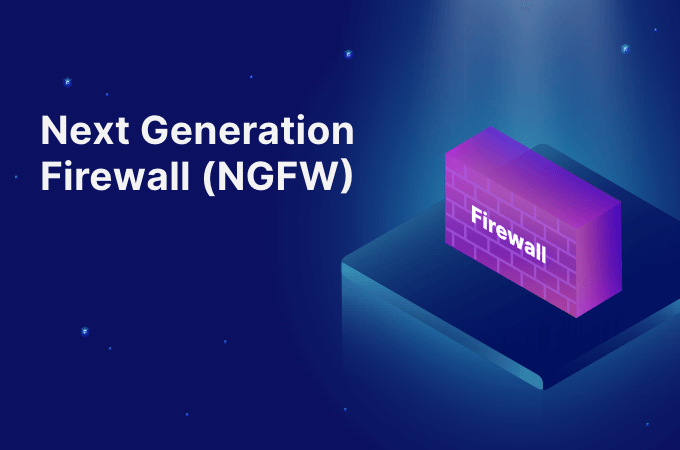Key Takeaways
- Discover the vital role next-generation firewalls play in keeping digital spaces safe.
- Learn how they differ from traditional firewalls in features and functionality.
- Understand best practices for implementing next-generation firewalls in business settings.
Table of Contents
- Introduction to Next-Generation Firewalls
- Key Features and Technology Behind Modern Firewalls
- Importance of Next-Generation Firewalls in Cybersecurity
- Best Practices for Implementation
- Challenges & Solutions in Deployment
- Comparing Traditional and Next-Generation Firewalls
- Future Trends in Firewall Technology
- Conclusion
Introduction to Next-Generation Firewalls
In the fast-paced digital era, safeguarding sensitive information has transcended from a luxury to an essential mandate for enterprises and individual internet users alike. Advanced technologies like Fortinet-powered data breach protection now stand at the forefront, offering robust solutions to counteract the ever-evolving landscape of cyber threats. These solutions are designed not just to defend but to anticipate potential breaches. Yet, how do next-generation firewalls fit into this puzzle of cybersecurity defense? Comprehending their role is pivotal for shaping any cybersecurity strategy for risk mitigation and threat management.
The technology landscape continuously evolves, marked by the development of tools intended to protect digital assets with unparalleled efficiency. The introduction of next-generation firewalls (NGFWs) signifies a significant leap forward in cybersecurity. Far surpassing their predecessors, these modern systems offer enhanced features that traditional firewalls once dreamed of. Exploring the various facets that render NGFWs an integral component of contemporary security frameworks is both timely and beneficial for organizations aiming for a robust defense mechanism.
Key Features and Technology Behind Modern Firewalls
The capabilities of next-generation firewalls extend far beyond legacy systems. Application awareness is Notable among their features, allowing for detailed visibility and control over applications running on a network. This aids in identifying and managing risks associated with specific applications. Furthermore, NGFWs have integrated intrusion prevention systems that dynamically block threats in real-time. Deep packet inspection is another advanced feature, enabling the firewall to thoroughly identify the data being transferred, identifying potential threats hidden within seemingly legitimate traffic. These advanced techniques collectively form a formidable defense mechanism against cyber threats.
Importance of Next-Generation Firewalls in Cybersecurity
Next-generation firewalls are vital in ensuring comprehensive security in today’s complex cyber environment. Their ability to efficiently manage traffic and detect malicious activities cannot be overstated. By incorporating these security measures, businesses fortify their networks, preventing unauthorized data breaches and shielding sensitive information. As discussed in this organizational cybersecurity framework, their presence in an organization’s IT infrastructure leads to enhanced system robustness, prominently contributing to heightened organizational cybersecurity levels.
Best Practices for Imtoday’sation
The successful deployment of NGFWs necessitates strategic planning and meticulous execution. Aligning firewall configurations with the organization’s security policies is imperative to harness their full potential. Regular system updates ensure that the firewalls are equipped with the latest threat intelligence to effectively counteract new and emerging threats. Moreover, organizations with security information and event management (SIEM) systems enhance their real-time monitoring and threat detection capabilities. By adopting these best practices, businesses can optimize performance while maximizing their security posture.
Challenges & Solutions in Deployment
Introducing NGFWs into any organizational network can come with its share of challenges, such as potential issues with the organization’s IT infrastructure. However, these obstacles can be surmounted through thorough pre-deployment testing to identify any integration issues. Employing managed services can ease deployment, allowing organizations to tap into expertise that ensures seamless integration without disrupting daily operations. Furthermore, continuous training for IT personnel becomes crucial in maintaining system reliability and leveraging the full breadth of NGFW capabilities.
Comparing Traditional and Next-Generation Firewalls
Conventional firewalls acted mainly as gatekeepers, allowing or denying network traffic according to IP routing and ports using basic rules. NGFWs have developed beyond that range by adding sophisticated features that thoroughly examine data packets. In contrast to their predecessors, NGFWs offer detailed insight into network activity, allowing them to recognize and stop increasingly complex threats. This development ushers in an era of more sophisticated, flexible, and all-encompassing defense tactics and represents a paradigm shift in how businesses see and implement cybersecurity measures.
Future Trends in Firewall Technology
The future of firewall technology is poised to undergo notable transformations driven by artificial intelligence and cloud computing advancements. AI-driven firewalls are anticipated to enhance automation, precision, and adaptability in detecting and mitigating threats. Moreover, the increasing shift towards cloud environments signals a growing need for scalable and flexible firewall solutions. These anticipated trends suggest a trajectory that continues to strengthen cyber defenses, promoting innovation within the cybersecurity domain.
Conclusion
In conclusion, next-generation firewalls have proven to be an indispensable component of modern cybersecurity strategies. They provide a multi-layered approach to security, incorporating advanced analytics and threat intelligence to safeguard digital environments proactively. As cyber threats evolve, integrating NGFWs into an organization’s security infrastructure is advisable and essential for ensuring data integrity and business continuity. By embracing these technologies, businesses can confidently and resiliently navigate the cyber threat landscape.

